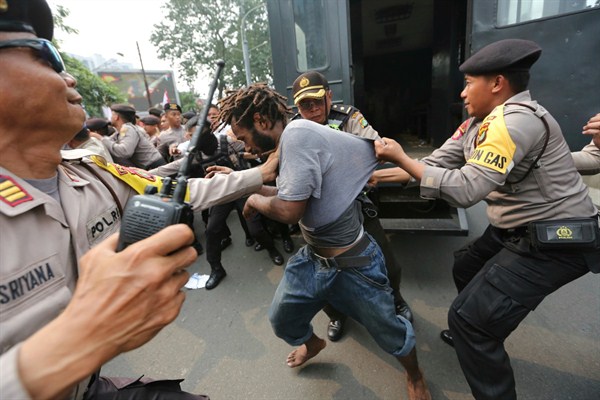John Ondawame greatly admired the independence struggle in East Timor, especially its ability to win active support from people in Europe, the United States and Australia. But the exiled former fighter, activist and spokesman for West Papuans also longed for the world to take notice of the plight of his people and to see the shared contours of the two conflicts—two ethnically distinct regions of Indonesia longing to break free. Ondawame did not live to see his dream of West Papua’s independence fulfilled; he died in 2014. But it is more difficult than ever for the Indonesian government to keep the problems of its most restive province out of sight.
Long mismanaged by successive administrations in Jakarta, West Papua is pushing harder to have its case for independence heard. Now possibly a minority in the province after decades of inward migration from other parts of Indonesia, ethnic Papuans increasingly worry that even a plebiscite, if secured, may not result in a decision in favor of independence. Further delays on a vote only add to their worries. For its part, the Indonesian government is unlikely to ever agree to independence for the resource-rich province, which along with Papua forms the western half of the island of New Guinea in eastern Indonesia.
The immense Grasberg mine in the central Papuan highlands is the main reason why. It is estimated to hold the world’s largest supply of gold and its third-largest supply of copper. Freeport-McMoRan, the American mining company that owns and operates the mine, has long been Indonesia’s single largest taxpayer. A deal transferring majority ownership of the Grasberg mine to the state-owned PT Indonesia Asahan Aluminium is nearing conclusion. The agreement will extend Freeport-McMoRan’s rights to mine at the site until 2041 and see new phases of underground mining, as Grasberg’s massive open pit is nearly exhausted.

